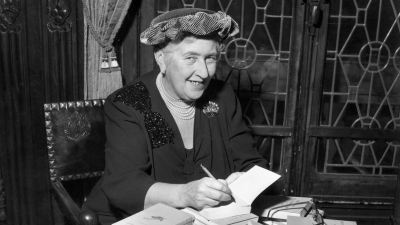
 The Mexican painter Frida Kahlo created striking, often shocking, images that reflected her turbulent life. She did not originally plan to become an artist. A polio survivor, at 15, Kahlo entered the premedical programme at the National Preparatory School in Mexico City. However, this training ended three years later, when Kahlo was gravely hurt in a bus accident. During her convalescence, Kahlo had begun to paint with oils.
The Mexican painter Frida Kahlo created striking, often shocking, images that reflected her turbulent life. She did not originally plan to become an artist. A polio survivor, at 15, Kahlo entered the premedical programme at the National Preparatory School in Mexico City. However, this training ended three years later, when Kahlo was gravely hurt in a bus accident. During her convalescence, Kahlo had begun to paint with oils.
Her pictures, mostly self-portraits and still lives, were filled with the bright colours and flattened forms of the Mexican folk art she loved. At 21, Kahlo fell in love with the Mexican muralist Diego Rivera, and married him. The couple travelled to the United States and France, where Kahlo met luminaries from the worlds of art and politics. She had her first solo exhibition at the Julien Levy Gallery in New York City in 1938.
During her lifetime, Frida created some 200 paintings, drawings, and sketches related to her experiences in life, physical and emotional pain and her turbulent relationship with Diego. She produced 143 paintings, 55 of which are self-portraits.
Perhaps best known for these self-portraits, Kahlo’s work is remembered for its ‘pain and passion’, and its intense, vibrant colours. Mexican culture and Amerindian cultural tradition figure prominently in her work, which has sometimes been characterized as naive art, or folk art.


 Margaret Bourke-White was born in New York City on 14th June, 1904. She became interested in photography while studying at Cornell University. She first gained recognition as an industrial photographer based in Cleveland, Ohio, where she specialized in architectural photography. Margaret later joined Fortune magazine as a staff photographer. She made several trips to the Soviet Union, and in 1931, published ‘Eyes on Russia’. In 1936, Bourke-White joined Life Magazine, and her photograph of the Fort Peck Dam appeared on its first front-cover.
Margaret Bourke-White was born in New York City on 14th June, 1904. She became interested in photography while studying at Cornell University. She first gained recognition as an industrial photographer based in Cleveland, Ohio, where she specialized in architectural photography. Margaret later joined Fortune magazine as a staff photographer. She made several trips to the Soviet Union, and in 1931, published ‘Eyes on Russia’. In 1936, Bourke-White joined Life Magazine, and her photograph of the Fort Peck Dam appeared on its first front-cover. What’s it like to make an amazing discovery-and then have nobody believe it? Barbara McClintock experienced this. In the 1940’s, she unlocked some of the deepest secrets about genes and DNA. Yet, it took nearly 20 years for her work to be accepted.
What’s it like to make an amazing discovery-and then have nobody believe it? Barbara McClintock experienced this. In the 1940’s, she unlocked some of the deepest secrets about genes and DNA. Yet, it took nearly 20 years for her work to be accepted.


 Amy Johnson was the first woman to have flown solo from England to Australia in May 1930 – a distance of 17,600 kms. In 1936, she also achieved a record breaking solo flight from England to South Africa. In July 1933 she and her husband made a transatlantic flight from England to America. It was the first non stop flight from the two countries. Her flying career began in 1928, and her other triumphs included becoming the first female ground engineer licensed by the Air Ministry.
Amy Johnson was the first woman to have flown solo from England to Australia in May 1930 – a distance of 17,600 kms. In 1936, she also achieved a record breaking solo flight from England to South Africa. In July 1933 she and her husband made a transatlantic flight from England to America. It was the first non stop flight from the two countries. Her flying career began in 1928, and her other triumphs included becoming the first female ground engineer licensed by the Air Ministry.
 Pearl S. Buck was a great writer who was ‘absorbed in the wonder of earth’. Fittingly her greatest work was ‘The Good Earth’. This novel tells the tale of a poor Chinese peasant and his love for the earth. It was an American bestseller and won the Pulitzer Prize.
Pearl S. Buck was a great writer who was ‘absorbed in the wonder of earth’. Fittingly her greatest work was ‘The Good Earth’. This novel tells the tale of a poor Chinese peasant and his love for the earth. It was an American bestseller and won the Pulitzer Prize.

